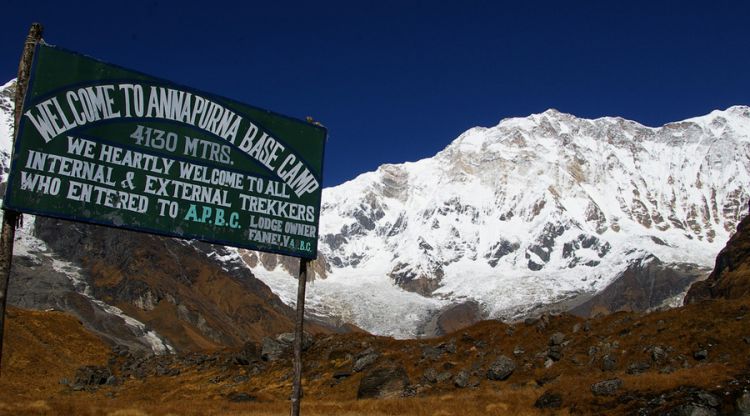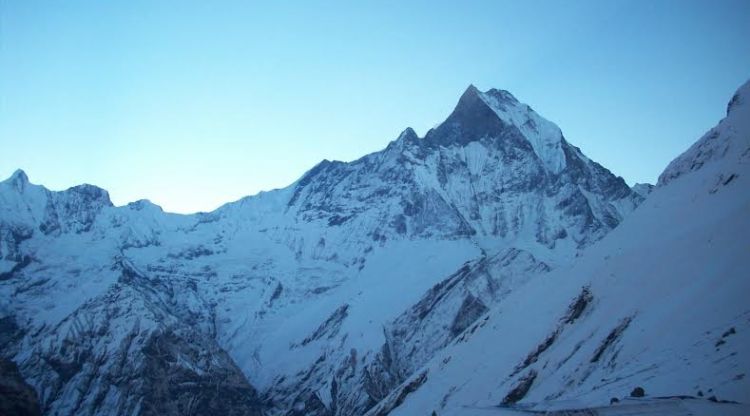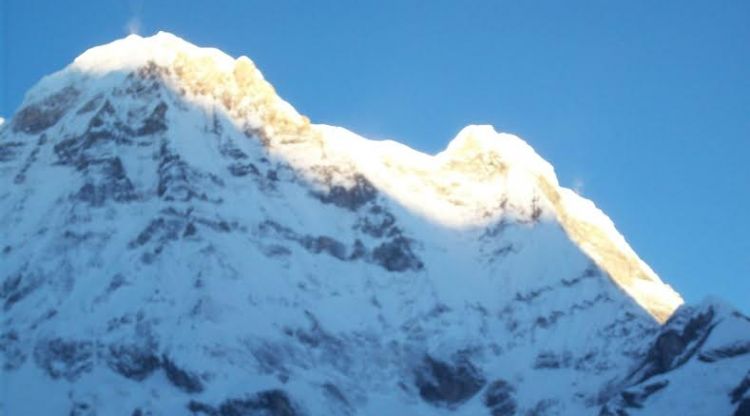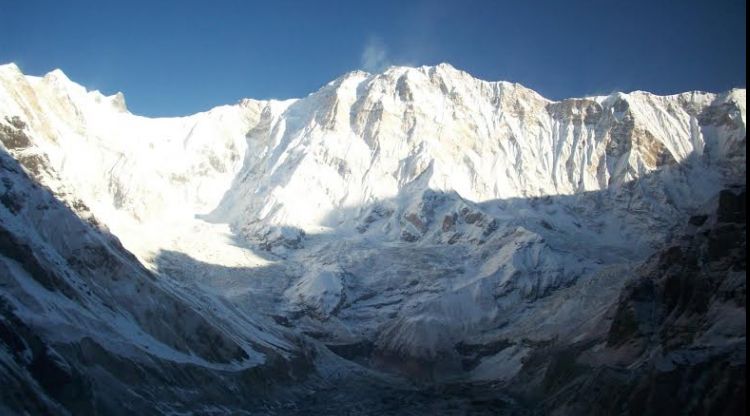Annapurna Base Camp Trekking
Start from: US$ 1250 Per Person
Destination:Nepal
Total Duration:14 to 16 days Days
Trip Grade:Moderate to Strenuous
Meals:Breakfast + Lunch + Dinner
Transportation:Private Vehicle / Aeroplane
Accommodation:Lodge
Show AllANNAPURNA BASE CAMP TREKKING
Option I
Day 01: Arrival in Kathmandu
Day 02: Cultural sightseeing in Kathmandu
Day 03: Kathmandu to Pokhara (914m.)
Day 04: Pokhara to Sinuwa 2370m
Day 05: Sinuwa to Deurali 3200m.
Day 06: Deurali to Annapurna Base Camp 4130 m.
Day 07: Annapurna Base Camp to Dovan 2600m.
Day 08: Dovan to Jhinudanda 1750m.
Day 09: Jhinudada to Pokhara and Kathmandu
Day 10: Departure onward departure
Price: 855 $ per personDay to Day Itinerary
Day 01:Arrival in Kathmandu
Day 02:Cultural sightseening in Kathmandu
Day 03:Kathmandu to Pokhara (914m.)
Day 04:Pokhara to Nayapul 1070m. by car,& trek to Tikhedhunga 1480m
Day 05:Tirkhedhunga to Ghorepani 2860m.
Day 06:Ghorepani to Poon Hill 3210m. to Tadapani (2630m.)
Day 07:Tadapani to Chhomrong 2170 m.
Day 08:Chhomrong to Bamboo 2310m.
Day 09:Bamboo to Deurali 3200m.
Day 10:Deurali to Annapurna Base Camp 4130 m.
Day 11:Annapurna Base Camp to Dovan 2600m.
Day 12:Dovan to Jhinudanda 1750m.
Day 13:Jhinudada & Drive to Pokhara
Day 14:Pokhara to Kathmandu
Day 15:Rest and other activities in Kathmandu
Day 16:International Departure for onward destination, If the above Itinerary doesn't meet your needs.We can design individualized trekking,tours plans base on your desire and Private departure are available everyday upon your request.
Cost Include
- Airport / Hotel / Airport pick up & transfer by car / Van / Bus.
- 4 nights accommodation with breakfast at 3 star standard hotel in Kathmandu and 2 night at Pokhara in 2 star Hotel with Breakfast as per above program.
- Sightseeing in Kathmandu Escorted with English Speaking Guide & Entrance fee, car van
- Guide and porter during the trek (Sherpa and Assistance guide for above 5 pax)
- Kathmandu -Pokhara-Kathmandu by tourist standard bus for client and Nepali staffs.
- Wake up tea and warm washing water/towel/ dettole soup for the morning
- Meals (breakfast, lunch and dinner) with Tea & coffee during the trek.
- Snacks and hot tea during the trekking period before dinner
- Local fresh fruits like orange, apple and banana etc for desert.
- Our own pillow and bedcover during the trekking.
- 9 nights twin sharing lodge to lodge accommodation in the mountain (basic but neat and clean).
- 1 highly experienced, helpful and friendly Guide, porters (1 porter between 2 clients), their food, accommodation, salary, equipments, insurance (We have insured our staffs by Neco Insurance Company Nepal).
- First Aid medical kit.
- Annapurna Conservation Area Project (ACAP) entry permit.
- TIMS (Trekkers Information Management System)
- Down jacket, 4 seasonal sleeping bag
- Duffle bag to each client (if needed)
- Government taxes.
- Office Service charge & rescue arrangement if needed.
Cost Exclude
- International Airfare and taxes
- Nepal Visa fee (US$ 40 per person for 30 days)
- Travel Insurance
- Medical evacuation in case of emergency.
- Personal spending money.
- Any expenses of personal nature, client's insurance
- Items of personal nature i.e. Soft/hard drinks, hot water, shower, battery charge, internet, telephone etc.
- Expenses incurred due to mishaps, landslide, strikes, political unrest etc. In such case extra will be charged as per actual.
- Tips for Guide, Sherpa, Porter and driver.
Why Choose Us?
Nepal –Tibet Trekking (P) is a leading trekking and adventure outfitter in the Himalayas. We have highly qualified and professional team members, who are dedicated to customer service and satisfaction. We provide personalized tours and…
Read MoreClient Reviews
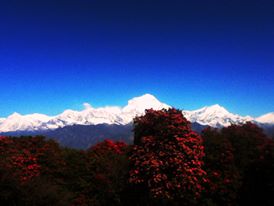
I wholeheartedly recommend the services provided by the Nepal-Tibet Trekking travel agency, which offers a variety of mountain expeditions and…
Karolina Brukszo, Poland
View All